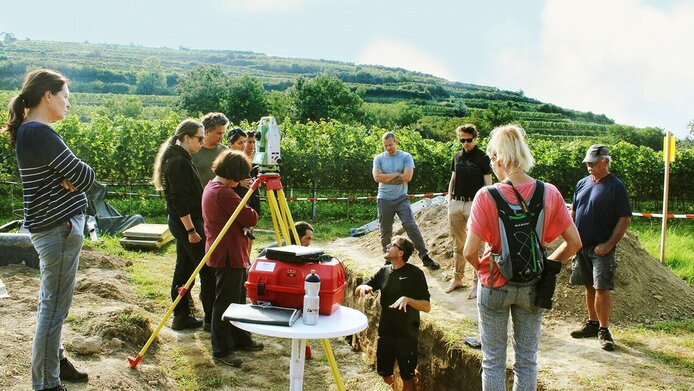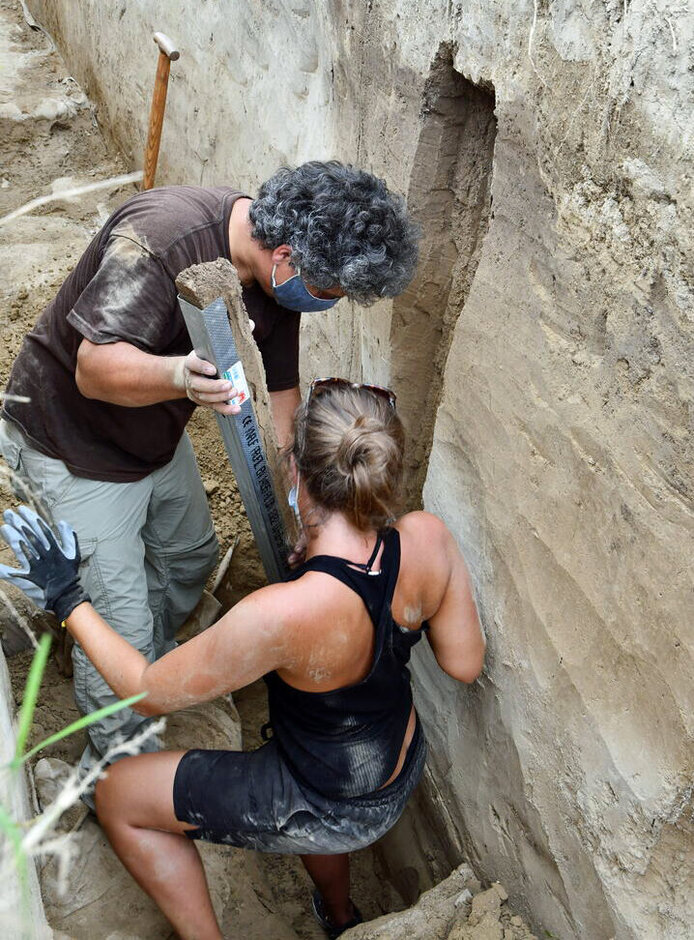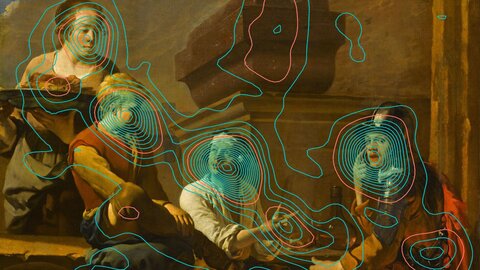Lessons learned from stones
Stones and stone tools also furnish important information about the period in the Paleolithic that gave the Stone Age its name. “The lion’s share of the tools that people used to cut, scrape, plane or carve were made of stone,” says Norbert Buchinger.
Stone tools tell us how people lived in the Epigravettian. At certain intervals they moved around and spent short periods camping on a site. At that time, Kammern-Grubgraben was probably the main camp site. The stone tools that were used at the site were preserved in the loess soil for thousands of years. This represents a stroke of luck for archaeologists. In the context of the project and his doctoral thesis, Norbert Buchinger is analyzing no less than roughly 20,000 stone tools that were unearthed during excavations in Kammern-Grubgraben in the 1980s and 1990s.
Gaps in the jigsaw puzzle
The documentation from these past excavations tells him where the artifacts were found. Using radiocarbon dating (C-14 method), the researchers determine the age of the soil layers in which the stone tools were found, which helps them draw conclusions about the age of the tools.
“The investigations of the stone tools provide unique insights into the life of hunter-gatherer communities. For instance we determine whether a tool was produced on site or only ended up there,” explains the archaeologist. These analyses also help the research team to understand migration patterns.
Nonetheless, there are still many uncertainties, as Einwögerer describes: “We are putting together something like a jigsaw puzzle of which we have neither all the pieces nor a picture of the final image. Every analysis and every evaluation gives us another piece of the puzzle.” Rough outlines of the big picture are already emerging. The researchers were able, for instance, to show that the hunter-gatherer communities in Kammern-Grubgraben primarily hunted reindeer. The analysis of large stone pavements also provided an important clue. The hunter-gatherers used them to dry the skins of their prey. The stone base made it possible to process the skins even when the upper layer of the permafrost melted in summer.
The Stone Age refrigerator
In summer 2019, archaeologists from Thomas Einwögerer's group found another big jigsaw piece. “We were able to unearth a meat cache – a kind of Ice Age refrigerator. It consists of a stone pavement on the permafrost soil that was surrounded by stones. In this pile of stones people stored reindeer meat,” explains Einwögerer. In the meat cache, the meat was kept safe from smaller predators for several weeks.
As yet, there has not been enough research to explain how the breakdown in the material culture in the Epi-Graviette came about. “The picture is still very fuzzy,” says Norbert Buchinger. But one thing is certain: the researchers will continue to put the story together piece by piece.
Personal details
Norbert Buchinger studied prehistory and historical archaeology at the University of Vienna, and prehistory and early history at the University of Cologne. The archaeologist is conducting research in the Quaternary Archaeology research group at the Austrian Archaeological Institute (ÖAI) of the Austrian Academy of Sciences (ÖAW). Buchinger works on technological and typological analyses of stone artifacts from European and Arab sites.
Thomas Einwögerer studied prehistory and early history at the University of Vienna. In 2000 he became a research associate at the Austrian Academy of Sciences. Einwögerer has headed the Quaternary Archaeology research group at the Austrian Archaeological Institute of the ÖAW since 2017.
Publications
Reiss L., Mayr Ch., Pasda K., Einwögerer, T. et al.: Changing food webs before and during the Last Glacial Maximum based on stable isotopes of animal bone collagen from Lower Austria, in: Journal of Quaternary Science 2023
Einwögerer, T.: The Discovery of a Possible 'Meat Cache'. Recent Excavations at the Upper Palaeolithic Open-air Site in Kammern-Grubgraben 2015-2020, in: Archaeologia Austriaca 2021
Händel M., Simon U., Maier A. et al.: Kammern-Grubgraben revisited - First results from renewed investigations at a well-known LGM site in eastern Austria, in: Quaternary International 2021







